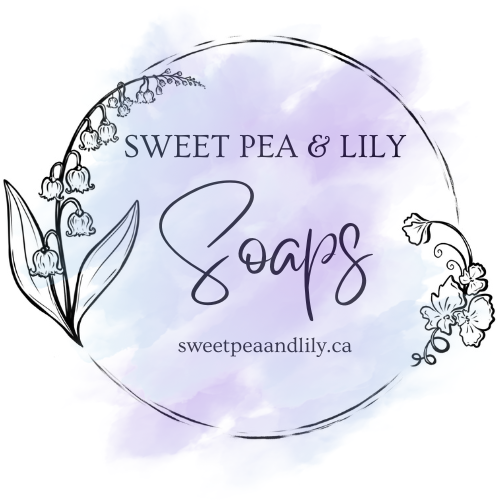FAQ
What ingredients do you use to make your artisan soap at Sweet Pea and Lily?
- Our base recipe uses the following ingredients;
- Olea Europaea (Olive) Oil
- Butyrospermum Parkii (Shea Butter) Fruit
- Helianthus Annuus (Sunflower) Seed Oil
- Aqua/Distilled Water
- Cocos Nucifera (Coconut) Oil
- Ricinus Communis (Castor) Seed Oil
- Some recipes have the inclusion of;
- Mangifera Indica (Mango) Seed Butter
- Theobroma Cacao (Cocoa) Seed Butter
- Persea Gratissima (Avocado) Oil (confetti &fifty shades soap only, phased out in March 2024)
- In addition, the following ingredients may be used in different batches;
- Kaolin Clay (most soaps)
- Activated Charcoal
- Titanium Dioxide
- Mica (cosmetic grade)
- Lavender Buds
- Orange Peel, dehydrated
- Pomegranate powder
- Mango powder
- Cranberry powder
- Pomegranate Seeds
- Himalayan Salt
- Poppyseeds
- Jasmine flower
In ALL cases, ingredients are printed on the back label of the soap and available in the description on the website and facebook page.
.
If you have any questions, please feel free to contact us.
.
What about lye (Sodium Hydroxide)?
.
Natural soap contains lye, an ingredient that is sometimes mistaken as a negative.
.
Lye is a natural ingredient - In fact, there is no true soap that does not contain or use lye somewhere in the process of making it.
.
Soap products are made using lye, but they don’t contain any lye in the final product.
.
While making soap, a chemical reaction occurs between a triglyceride (a fat or oil) and the lye called saponification. The result is glycerine and soap. Artisan soap makers leave the glycerides in, giving you a great soap-based cleanser which will moisturise your skin.
.
The lye is completely gone at this point, as are the triglycerides, consumed in the reaction that creates the soap and glycerides.
.
Modern soap makers understand the chemistry, and with exact measuring, ingredients are combined in a way that makes sure the lye is consumed in the reaction, leaving nothing harmful behind to damage your skin.
.
Some soap makers add additional oil, which not only adds a buffer to ensure complete lye consumption, but it also increases the moisturising properties of the soap itself.
This practice is often called ‘superfatting,’ because the maker is including more fats and/or oils than are needed.
.
What is in your packaging?
.
The outer wrap and ingredient label are made from recycled paper and both can be put in your recycling bin.
.
The shrink wrap is made of a recyclable plastic and is recyclable. We have chosen to shrink wrap our soap to preserve scent, and keep the soaps protected and hygienic when at craft fairs and markets.
.
We are aiming to move to a biodegradable and compostable shrink wrap, called bioelifin, by early 2025 which will be able to be composted or disposed of in regular waste where it will break down.
.
Are your products vegan and/or organic?
Not all of them. Most of our products are vegan however the following soaps contain honey or goats milk, making them them unsuitable for vegans.
- Oats & Honey (not currently available)
- Lavender & Goats Milk (not currently available)
- Indigo & Goats Milk
In all cases, soaps which are vegan are noted in the description.
Our products are not certified organic but we endeavour to use organic essential oils and organic ingredients whenever possible.
On October 25th, Sweet Pea and Lily applied for Leaping Bunny certification indicating that all of our products and our source ingredients are verified to not be tested on animals.
